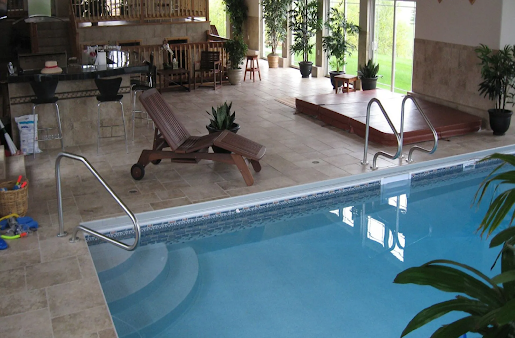Choosing the Right Sauna for Your Bath in Your Home
Before diving into the installation process, you'll need to decide on the type of sauna that suits your preferences and space. The two main options are:
Traditional Sauna: These saunas use a dry heat system, typically heated by electric or wood-burning stoves. Traditional saunas offer high temperatures and low humidity, perfect for that classic sauna experience.
Infrared Sauna: Infrared saunas make use of infrared heaters to emit radiant heat that directly warms your body without significantly raising the surrounding air temperature. They are known for providing a milder, more gentle heat experience.
Consider your available space, budget, and how you plan to use the sauna when making this choice.
How to Plan Your Sauna Location?
Once you've settled on the type of sauna, you'll need to select the location within your home or on your property. Some factors to keep in mind include:
Space: Ensure you have enough room for the sauna and additional features like changing rooms or showers.
Ventilation: Proper ventilation is crucial to prevent excess moisture buildup and maintain air quality within the sauna.
Access: Consider the easy access to the sauna, especially if you plan to use it frequently.
Electrical and Plumbing: If you're installing a traditional sauna, you'll need access to electrical wiring for the heater. Infrared saunas are often easier to install as they require a standard electrical outlet.
Sauna Installation Steps
Preparation: Ensure proper ventilation and address any necessary electrical or plumbing work before you go for Sauna Install.
Construction: Depending on your sauna type, you may need to assemble the structure. Traditional saunas often come in pre-built kits, while infrared saunas are typically more straightforward to set up.
Wiring and Heating: For a traditional sauna, hire a professional electrician to wire the heater according to the manufacturer's guidelines. Test the heating system to ensure it reaches and maintains the desired temperature.
Interior Furnishings: Add benches, backrests, and other interior furnishings according to the sauna's design. Ensure all materials used are heat-resistant and safe for sauna use.
Finishing Touches: Install desired features, such as lighting, music systems, or aromatherapy dispensers. These extras can enhance your sauna experience.
Ventilation and Safety: Install proper ventilation to ensure fresh air circulation and safety. Saunas should have adequate ventilation to prevent excess humidity and maintain a comfortable environment.
Sealing and Insulation: Properly seal and insulate the sauna to ensure heat retention and energy efficiency. This step is crucial for maintaining the desired temperature.
Testing and Maintenance: Test your sauna to ensure it functions correctly and safely. Regular maintenance, including cleaning and replacing heating elements, is essential for longevity and performance.
At My Aquatic Services, we design and build swimming pools, swim spas, saunas, and specialty aquatic therapy products at the best prices. Our unique designs and products will make you and your family smile.
Briefly Put!
A sauna can bring relaxation and numerous health benefits to your life. By carefully selecting the type, planning the location, and following the installation steps, you can create your oasis of relaxation right in the comfort of your home.



.jpg)
Comments
Post a Comment